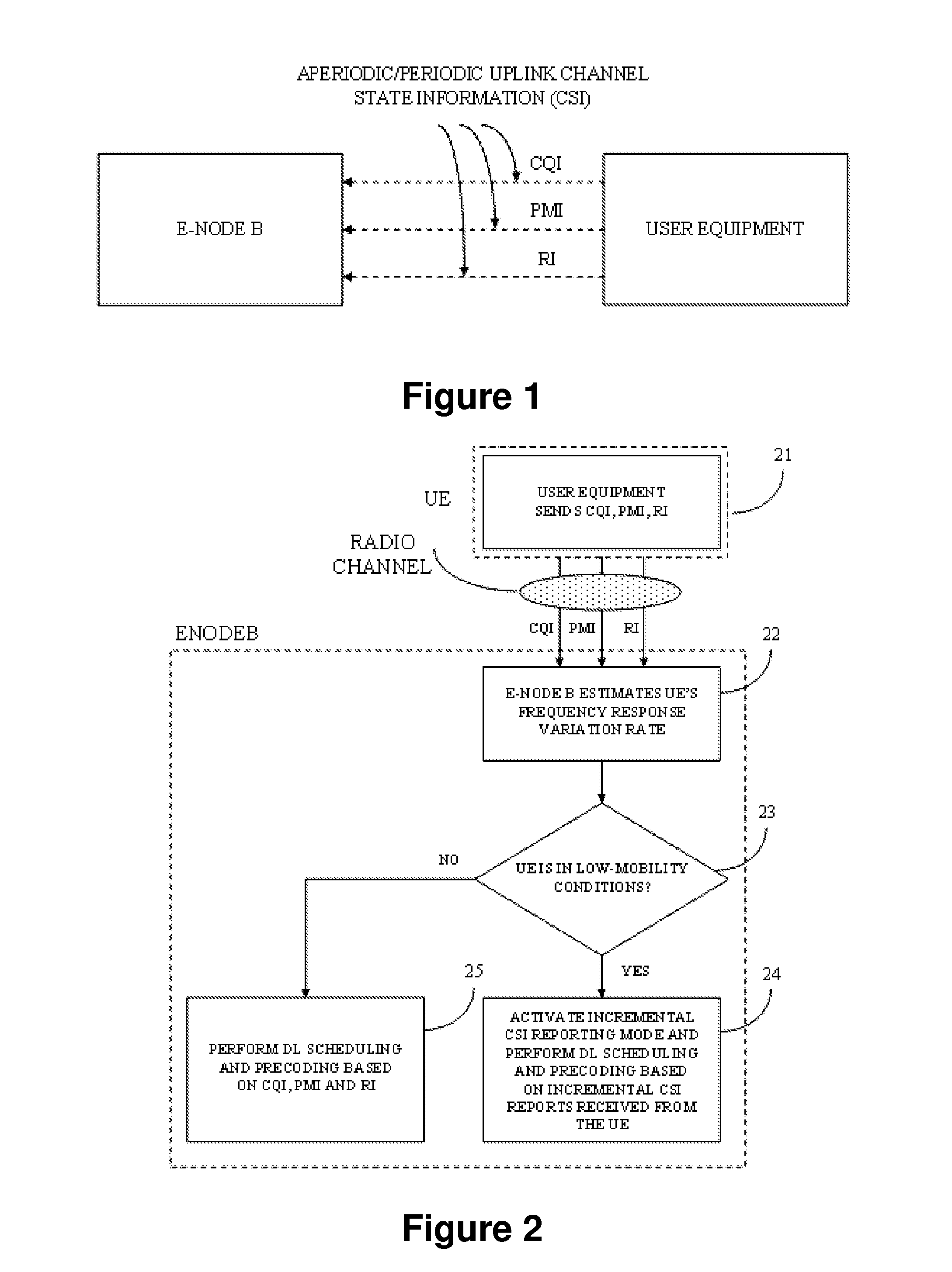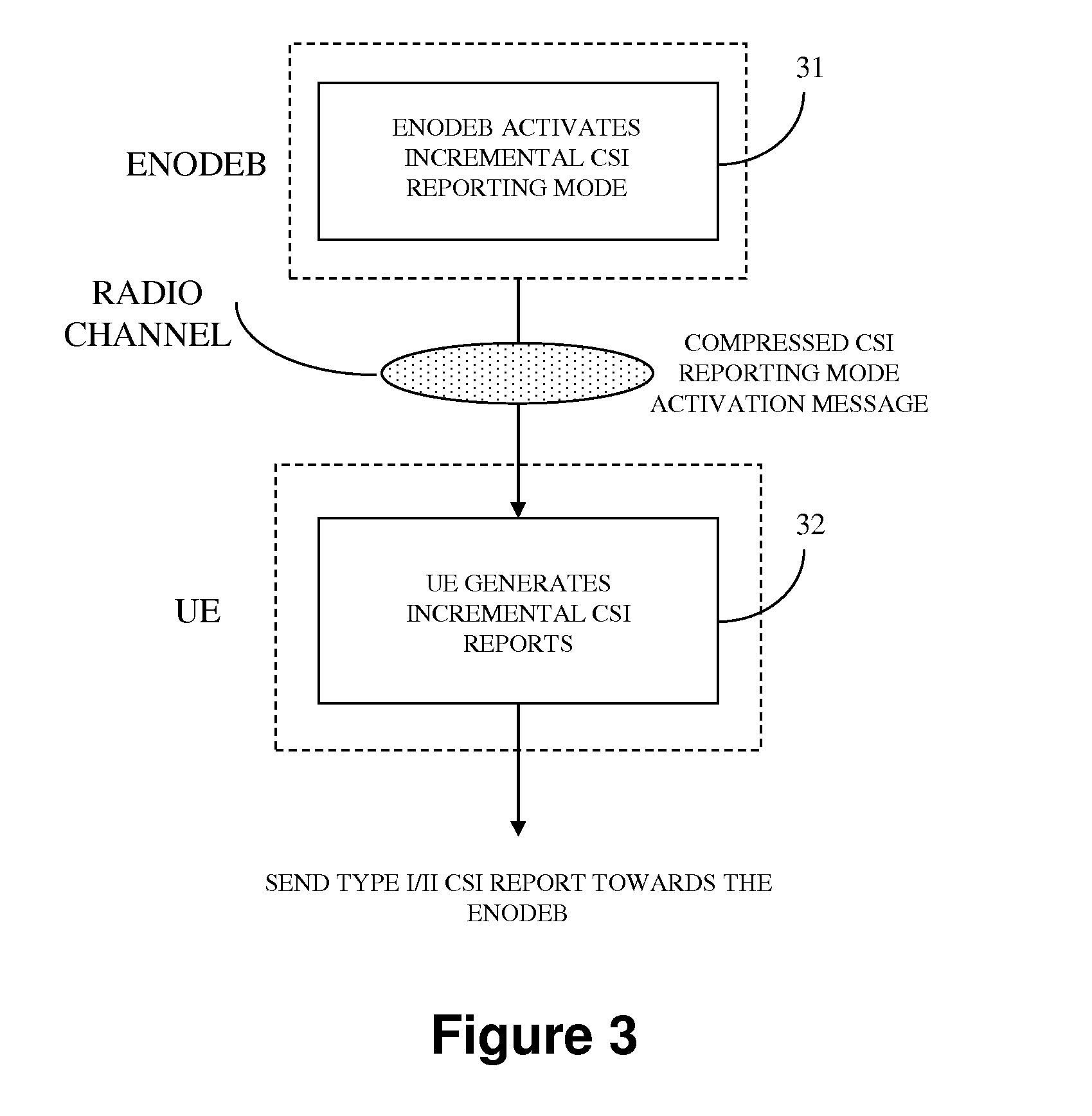Method and a system for csi reporting in LTE networks according to the mobility of the user equipment
- Summary
- Abstract
- Description
- Claims
- Application Information
AI Technical Summary
Benefits of technology
Problems solved by technology
Method used
Image
Examples
Embodiment Construction
[0058]The present invention proposes a periodic reporting of CSI in LTE-Advanced networks, which would be especially adequate in low-mobility scenarios such as indoor, hot-spots, small offices, etc. while at the same time providing accurate information for the use of advanced MIMO techniques. Such low-mobility situations can be characterized by a sufficiently low rate of variation in the measured channel conditions at the receiver. The relevant thresholds of the measured parameters for a UE to be considered in low-mobility situation depend on the actual channel conditions, as explained below.
[0059]Two mechanisms are required in order to implement the proposed reporting mode:[0060]One mechanism implemented at the eNodeB, by virtue of which a low-mobility situation is detected for UEs in RRC_CONNECTED state. If that is the case, the eNodeB will inform the UE to activate the proposed reporting mode and will therefore decode the compressed CSI reports sent by the UE.[0061]One mechanism ...
PUM
 Login to view more
Login to view more Abstract
Description
Claims
Application Information
 Login to view more
Login to view more - R&D Engineer
- R&D Manager
- IP Professional
- Industry Leading Data Capabilities
- Powerful AI technology
- Patent DNA Extraction
Browse by: Latest US Patents, China's latest patents, Technical Efficacy Thesaurus, Application Domain, Technology Topic.
© 2024 PatSnap. All rights reserved.Legal|Privacy policy|Modern Slavery Act Transparency Statement|Sitemap



